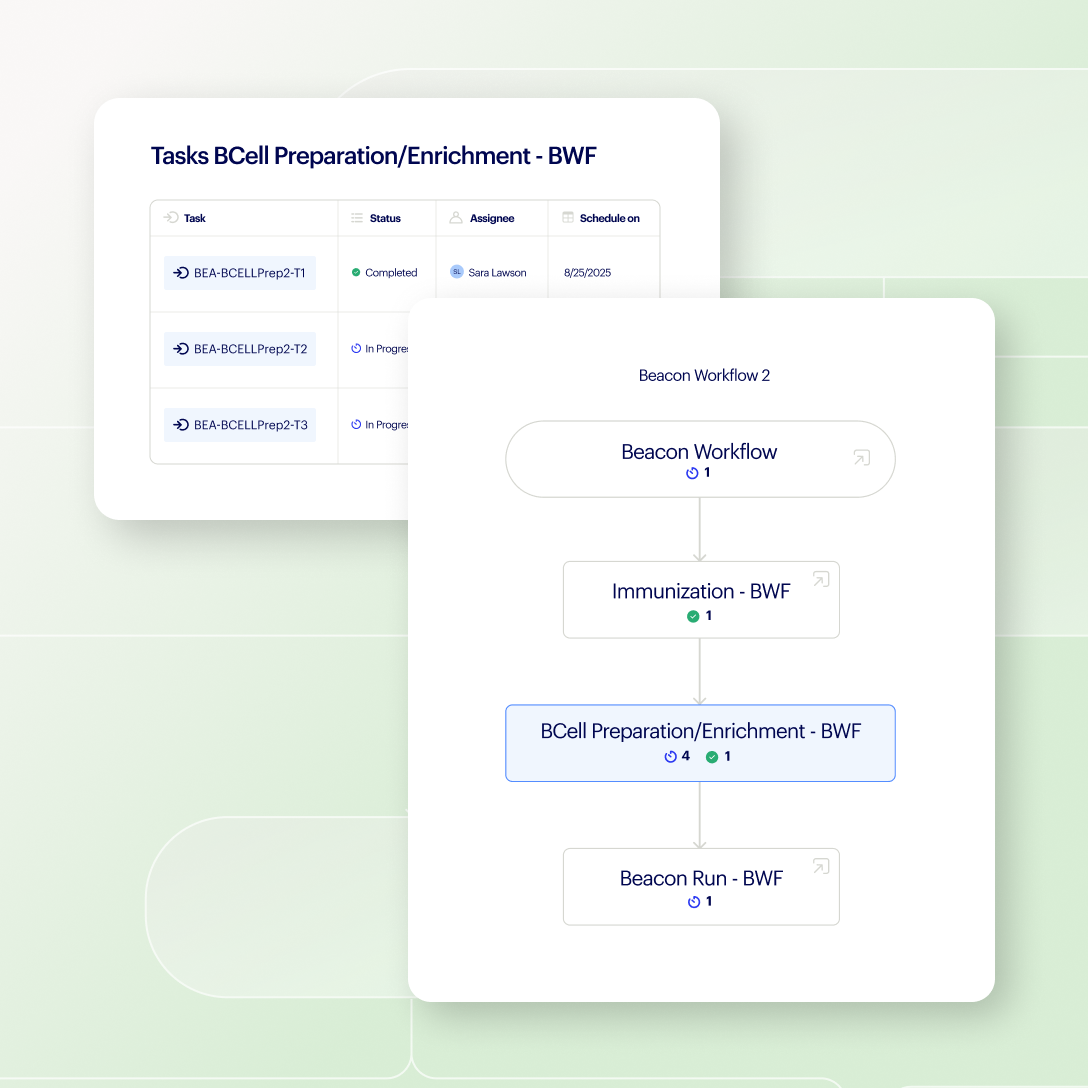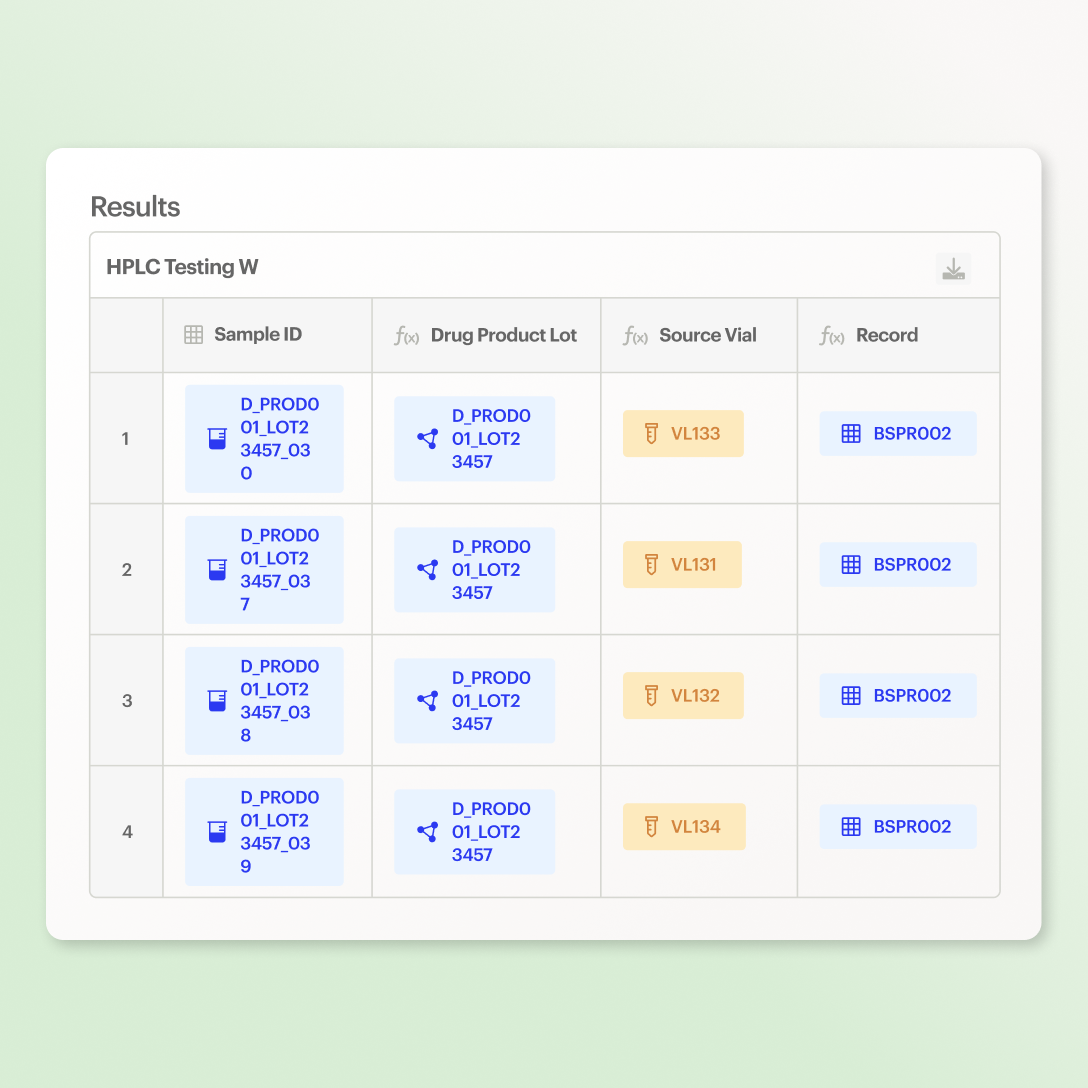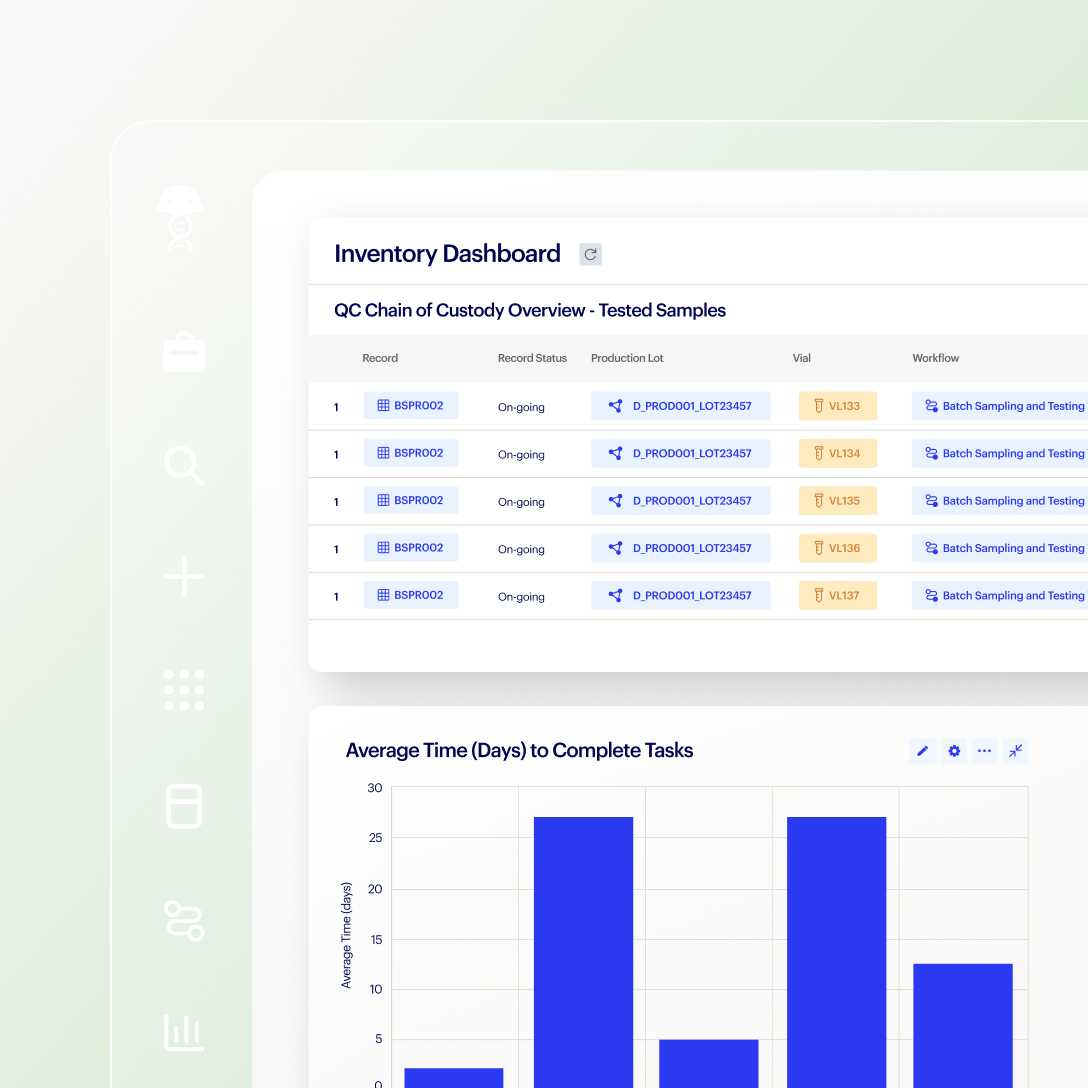
Blog post

Most LIMS were originally designed for chemistry which limits their ability to support today’s fast-changing world of biomolecule R&D.
Benchling takes a different approach — delivering a flexible, connected platform that adapts to new modalities, automates manual work and workflows, and empowers teams to accelerate discovery and development.


Adds context by structuring data and linking samples, results, and processes in one place.
Accelerates progress with flexible workflows and real-time collaboration.
Stays agile with a platform that adapts to evolving science
Boosts efficiency through seamless integrations and instrument automation.

Lose context when samples, results, and processes aren’t connected.
Hinder progress with rigid workflows and limited collaboration.
Fall behind as systems struggle to support new modalities.
Limit efficiency with clunky integrations and manual data handling.

Optimize handoffs across teams with connected, transparent processes enriched by context
Design and adapt workflows quickly to fit evolving science
Unblock bottlenecks by streamlining processes on a single, central platform

Register and track samples in shared, standardized datasets
Integrate results directly with experiments for end-to-end traceability
Increase inventory utilization and maintain sample history visibility across R&D

Aggregate results in real time for operational clarity
Share KPIs and operational reports to align teams and leadership
Maintain data integrity and protect IP with traceability, compliance, and secure collaboration


Handle the complexities of designing, testing, and producing today’s complex large molecules with a platform built for cutting-edge science.

Unite your teams with a shared digital workspace that connects scientists, data, and workflows — advancing R&D while reducing friction.

Evolve with your science. Support changing processes, experimental designs, and program needs as your research progresses.

Work in a single, cloud-native environment that’s always up-to-date, simplifies collaboration, and scales with your organization.

Track samples, monitor experiments, and manage resources throughout the entire research lifecycle.

Ensure high-quality data with built-in audit trails, versioning, and compliance support for both non-GxP and GxP environments.
A laboratory information management systems (LIMS) is a software solution that manages lab data, reagents, test results, workflows and teams and increase lab operational efficiency, productivity and effectiveness in delivering high-quality results. The definition of a LIMS may vary depending on the source and the industry, but the general functionality of promoting efficiency and productivity is pretty universal. It can be a cloud-based configurable SaaS solution to more effectively connect scientific teams and organizations.
LIMS software delivers the capabilities of an electronic lab notebook with fully integrated sample management, data management, lab management, inventory management, and integration with lab instrumentation. It’s a digital laboratory management and execution system to help scientists connect data, reagents, test results, processes and teams together more efficiently. It helps to streamline workflows, promote high-quality test results, and improve productivity of scientists. It also helps bridge the gap between informatics, instrumentation and shared information among teams.
Think of a LIMS software system like an air traffic controller, overseeing and directing all the planes in the air. The goal is to maintain an on-time schedule, avoid collisions and most importantly, deliver the precious cargo safely and efficiently. The key benefits of a LIMS are effective collection of data or samples, defined organization of information (lab management, workflows management, resource management) and improved sharing of results and conclusions among and across teams or organizations. A LIMS helps record, store and preserve critical information and precious intellectual property (IP) that is vital knowledge for an organization today and for the future. With an effective LIMS system, you can generate dashboards and reports to further connect and share information across teams and better monitor the status and progress of programs.
The biggest difference between a LIMS and a laboratory information system (LIS) is that a LIS is traditionally used to support patient-centric specimens that are reported in clinical laboratory settings. LIMS on the other hand are designed to capture and report on sample-based processes. Historically, LIMS are used for environmental studies, biological research and commercial analysis such as pharmaceuticals, food and beverage, manufacturing, sequencing and quality assurance biology labs.
The distinctions between the features and core functions of a LIMS and LIS have lessened given the rapidly evolving nature of science in all areas and the needs of researchers. These platforms are focused on improving efficiency and productivity of scientists, reducing human-error and helping to accelerate data analysis and turnaround times in making high-quality conclusions based on the results.
Selecting a LIMS software is similar to choosing any other software solution for the lab and your research needs. A critical consideration is finding a software that is intuitive and easy to use. If it is challenging to navigate, record entries or share information, it is likely people will not use it. Secondly, consider a LIMS software that can be tailored or offers configurable setups and upgrades to address our needs not only today but in anticipation of future needs. Also, consider a LIMS software that has the ability to connect and interact with different modules to address different functionalities. Rarely will you find one software that can seamlessly perform recording and data management functions such as sample tracking or inventory management. Benchling is an examples of a cloud-based SaaS connected platform that is connected and adaptable able to handle your needs and scale with your science.
The key difference between a LIMS and an ELN is that a LIMS is used with structured, repeated workflows, processes, and data. An ELN is often associated with changing, flexible workflows and recording data. An ELN is often a component of a LIMS platform. Given the increasing complexity of modern science, tool providers offer solutions that integrate both ELN and LIMS capabilities into one platform to enable scientists to be more productive.
LIMS software was created to help promote collaboration and productivity among scientists and across an organization. The biggest advantage to cloud-based LIMS software over on-premise or in-house LIMS software solutions is the superior storage and secure back-up of information. Also, cloud-based solutions afford access to information anywhere provided an internet link is available. On top of this, with cloud-based solutions updates and bug-fixes can be pushed out immediately to address issues and get users back online working faster. For example, Benchling Notebook is a secure cloud-based software that is more than a traditional ELN as it is part of a LIMS productivity hub that comprises multiple connected applications that help streamline sample and data recording, accelerate analysis of results and connect teams across an organization.
Any research teams looking to improve on bridging the gaps within an organization will benefit from LIMS software. This can range from research to development and even manufacturing teams. Some critical challenges these labs have faced using legacy LIMS have been inefficient knowledge transfer processes, poor context for scientific decision support and a lack of shared information traceability.
When selecting a LIMS software a top consideration is to find one that can be tailored and customized to handle your specific research needs. An effective LIMS will help to establish data management and sample management processes that enable scientists to more efficiently track samples throughout the R&D lifecycle. Often LIMS software will have electronic lab notebook recording capabilities or other workflow and project management features. Adaptability of a LIMS software is another important feature to consider given the fast-pace and evolving nature of science programs. The software should evolve and scale with your research and the teams. For example, companies with a more mature pipeline of products may require a LIMS that addresses regulatory requirements and can define a chain of custody to follow for samples and data. While organizations on a positive growth trajectory may be looking to establish processes and templates to share data, create SOPs and reduce human-error due to repetitive manual tasks. Consider a cloud-based LIMS software to maximize on better accessibility, storage and security over on-premise and in-house solutions.
Yes, given the wide range of programs and tasks involved in biological sciences there are different types of LIMS systems. This can range from scientists or chemists in early discovery, early development or analytical testing to those working further downstream in processing, production, manufacturing and even quality assurance. They all share a common feature to enable scientists to effectively manage samples and the associated data and workflow processes. Often teams will optimize and customize the LIMS software to address their specific needs but an efficient LIMS system will still serve as a unified central productivity hub to connect data, samples and teams.